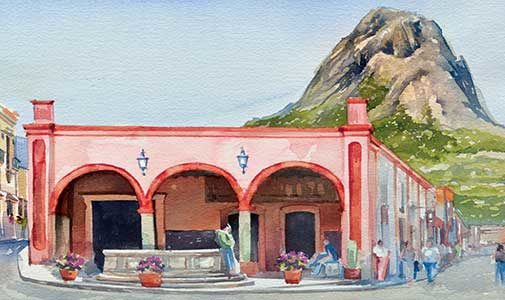The cobbled sidewalks of Bernal, in Mexico’s Colonial Highlands, are dominated by a colorful baroque cathedral. It’s Monday morning, and much of the weekend’s festive attitude has dissipated. Merchants slowly raise doors and pose mannequins dressed in colorful vestidos (dresses) and guayaberas (loose-fitting shirts). The palpable, yawning sleepiness is a stark contrast to last night’s festive, music-filled frenzy.
Outside Bernal, I pull into Finca Sala Vivé—a winery owned by the Spanish sparkling wine company, Freixenet—and join a wine cellar tour. Since much less English is spoken here than in some other parts of Mexico, I stick out like a sore thumb. But Andrea quickly introduces herself as my personal translator. And since I am over 60, she makes sure I receive a heavily discounted Boleto Senior (senior’s ticket).
In a massive fermentation room, a lively, moustached sommelier points out gleaming tanks filled with grapes grown on the grounds. Though U.S. and Canadian expats are more familiar with Mexican beers, winemaking in central Mexico began in the 1600s, during the colonial period.
We descend a staircase to a cave 80 feet below the surface. Racks upon racks of bottles recede into the shadows, some recently filled, others from much older vintages. I learn about the myriad processes that eventually lead to fine sparkling wine and am warned not to use flash for pictures. (An abrupt illumination could startle an aging bottle enough that it explodes.)

